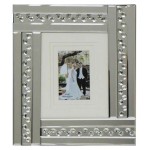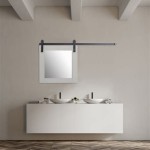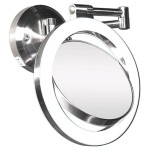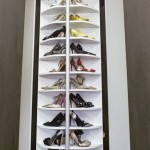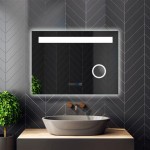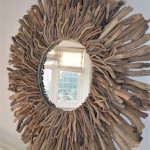```html
Understanding One-Way Mirrored Glass
One-way mirrored glass, also often referred to as two-way mirrors or observation mirrors, presents a unique optical phenomenon that has captured the interest of various sectors, from law enforcement and retail security to architectural design and psychological research. This seemingly paradoxical material allows viewing from one side while appearing as a standard mirror on the other. However, the functionality of this glass isn't magic; it's rooted in the principles of light transmission, reflection, and absorption, combined with carefully controlled lighting conditions.
The effectiveness of one-way mirrored glass relies heavily on the difference in light intensity between the two spaces it separates. The "mirror" side is brightly lit, while the observation side remains significantly darker. This establishes the necessary contrast for the desired viewing effect. If the lighting on both sides is equal, the glass will behave more like a partially reflective window, allowing visibility from both directions.
Key Points Affecting Functionality
Several factors contribute to the proper functioning of one-way mirrored glass, and understanding these is crucial to appreciating its applications and limitations.
1. Light Differential: The disparity in light levels is the single most important determinant of the one-way viewing effect. For the mirrored surface to function effectively, the room where the observation is being conducted must be significantly dimmer than the room being observed. Ideally, the observed room should be several times brighter. This creates a strong reflective surface on the brighter side, overpowering the transmitted light from the dimmer side.
The physics at play involves the reflection and transmission of light. When light strikes the glass, a portion of it is reflected back, while the remaining portion is transmitted through the glass and absorbed. In a brightly lit room, the amount of light reflected is substantially greater than the amount of light transmitted. This reflected light overwhelms the faint light coming from the darker observation room, creating a mirror-like effect. Conversely, in the darker room, a greater proportion of the already limited light is transmitted through the glass, enabling observers to see into the brighter room.
2. Coating Material and Application: One-way mirrors are created through a specialized manufacturing process that involves applying a thin, semi-transparent metallic coating to a glass substrate. This coating is typically composed of a metal such as aluminum or silver, applied using techniques like sputtering or vapor deposition. The thickness of the metallic layer is carefully controlled to ensure that it reflects a particular percentage of light while allowing the remaining light to pass through.
The reflective coating isn't applied uniformly across the entire surface. Instead, it is applied in a very thin, almost invisible layer. This allows a portion of the light to pass through the glass while reflecting the rest. Thicker coatings would result in a more effective mirror but would eliminate the "one-way" viewing capability. The material choice and coating process influence the mirror's reflectivity, transparency, and overall performance.
3. Angle of Observation: The angle at which one observes the glass can also influence its effectiveness. Looking directly at the glass from a perpendicular angle generally yields the best one-way viewing effect. Oblique angles may distort the image or reduce the contrast between the observed and observation spaces, potentially compromising the privacy of the observed room. This happens because light reflecting off the mirrored surface at extreme angles can bleed over, becoming visible from the observation side. Proper installation and consideration of viewing angles are crucial for optimal performance.
Furthermore, the size of the glass panel can play a role. Larger panels may exhibit slight variations in the coating, particularly during the manufacturing process. These variations, although often subtle, can affect the consistency of the mirrored effect across the entire surface of the glass. Ensuring high-quality manufacturing processes helps to minimize these inconsistencies.
Applications Across Various Sectors
The unique characteristics of one-way mirrored glass have led to its adoption in a diverse range of applications.
1. Security and Surveillance: One of the most common applications of one-way mirrors is in security and surveillance settings. Retail stores often employ these mirrors to monitor shoplifting activity, allowing security personnel to observe customers discreetly. Law enforcement agencies use them in interrogation rooms to observe suspects without their knowledge, facilitating investigations. Correctional facilities incorporate one-way mirrors in visiting areas to monitor interactions between inmates and visitors while maintaining security.
Additionally, casinos utilize one-way mirrors to monitor gaming tables and identify potential cheating or suspicious behavior. The unobtrusive nature of the observation allows the security team to gather information without alerting the individuals being observed. Banks and other financial institutions might also use one-way mirrors in specific areas to enhance security and deter criminal activity.
2. Psychological Research: Psychologists and researchers often use one-way mirrors in observation rooms to study behavior in a controlled setting. This allows them to observe participants without influencing their actions, minimizing the Hawthorne effect (the alteration of behavior by the subjects of a study due to their awareness of being observed). Parental observation rooms, often used in conjunction with therapy sessions involving children, are frequently equipped with one-way mirrors. This allows parents or therapists to observe the interaction between the child and therapist without directly participating, enabling a more natural and unbiased observation.
The anonymity provided by the one-way mirror is crucial in these settings as it allows researchers to gather data without the participants altering their behavior due to the presence of an observer. This leads to more reliable and valid findings.
3. Architectural Design: In architectural design, one-way mirrors can be incorporated for aesthetic and functional benefits. They can be used to create visual illusions, expand perceived space, or provide discreet observation points within a building. For example, a restaurant might use a one-way mirror to separate the kitchen from the dining area, allowing customers to observe the culinary process without disturbing the chefs. This adds an element of entertainment and transparency to the dining experience.
Furthermore, one-way mirrors can be used in high-end residential designs to create hidden rooms or observation areas. These architectural features offer privacy and security while adding a unique design element to the home. They are also useful in creating sensory deprivation rooms or meditation spaces where controlling the amount of external stimuli is important.
Misconceptions and Limitations
Despite its widespread use, several misconceptions surround one-way mirrored glass. It's essential to understand the limitations of this technology to avoid misuse or unrealistic expectations.
The most crucial point to remember is that a true "one-way" mirror does not exist. The effectiveness of the glass is entirely dependent on the lighting conditions. If the observation side becomes brighter than the observed side, the mirror effect will disappear, and both sides will be able to see each other. This is a common mistake made in amateur installations or when lighting conditions are not carefully controlled. Therefore, meticulous planning and execution are vital for ensuring the glass functions as intended.
Another misconception is that one-way mirrors offer complete privacy. While they provide a significant degree of privacy under the right conditions, they are not foolproof. With sufficiently advanced technology or a keen eye, it is sometimes possible to detect that the "mirror" is actually a window. For example, subtle reflections or distortions on the surface of the glass might indicate that it is semi-transparent. Additionally, shining a bright light directly onto the mirror surface can sometimes reveal the room behind it.
Furthermore, the effectiveness of the mirror can be compromised if the surface is scratched, damaged, or not properly cleaned. Scratches can scatter light and reduce the reflectivity of the surface, while dirt and grime can obscure the view from the observation side. Regular cleaning with appropriate cleaning agents is essential for maintaining the optimal performance of the glass.
Finally, it is crucial to be aware of any legal or ethical implications associated with the use of one-way mirrors. In some jurisdictions, the use of these mirrors may be restricted or prohibited, particularly in sensitive areas such as bathrooms or changing rooms. Always ensure compliance with local laws and regulations before installing one-way mirrors.
```
How To Install One Way Mirror Morn Glass Best Architectural Supplier

4mm One Way Glass

One Way Mirror Glass

Does One Way Mirror Tint Work After Dark Ap Tinting

Black Plain One Way Mirror Glass Size 3210 X 2250 Mm Thickness 7mm

Llumar One Way Mirror Alusign Plastics Inc

What Is One Way Mirror Window Co

One Way Mirrors Reflective Glass

One Way See Through Mirror Glass Two Mirrors China Wall Made In Com

Easy Ways To Make A One Sided Mirror With Pictures Wikihow
